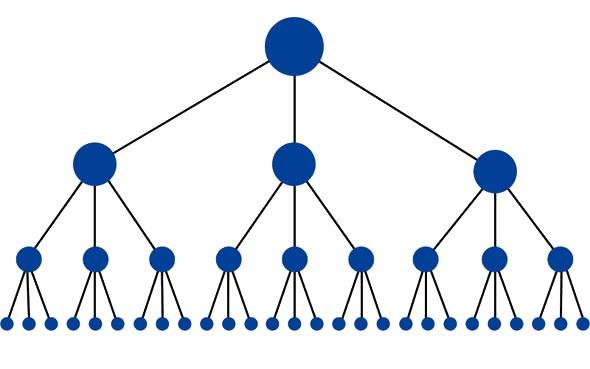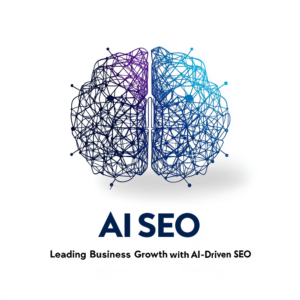In the ever-evolving landscape of digital marketing and search engine optimization (SEO), the significance of internal linking cannot be overstated. Internal links not only enhance the user experience by guiding visitors through relevant content, but they also play a crucial role in distributing page authority and improving overall site navigation. However, crafting an effective internal linking strategy can be a daunting task, especially as websites grow in complexity and depth. enter artificial intelligence (AI): a powerful ally poised to transform the way we approach internal linking. In this article, we will explore how leveraging AI-driven technologies can streamline your internal linking practices, optimize content discoverability, and ultimately drive greater engagement on your website. By harnessing the capabilities of AI, you can not only boost your SEO performance but also create a more intuitive and valuable experience for your audience. Let’s delve into the AI advantage and uncover innovative strategies to elevate your internal linking game.
Table of contents
- Understanding the Role of Internal linking in SEO Success
- leveraging AI Tools for Enhanced Content Discovery
- Strategies for Creating Contextual Internal Links
- Measuring the Impact of Internal Linking on User engagement
- Closing remarks
Understanding the Role of Internal Linking in SEO Success
One of the most crucial aspects of a accomplished SEO strategy is the implementation of effective internal linking. by strategically placing hyperlinks that connect different pages on your website, you can guide both users and search engines through your content, enhancing navigation and improving user experience.Internal links help establish a hierarchy within your website, allowing crawlers to understand the importance and relevance of each page. This hierarchical structure ensures that your most valuable content receives the visibility it deserves, ultimately contributing to higher rankings in search engine results.
Moreover, internal linking plays a significant role in distributing page authority and boosting the overall SEO profile of your site. When you link to a page with high authority, you transfer some of that value to the linked pages, enhancing their chances of ranking better. Consider the following strategies to maximize your internal linking efforts:
- Link Relevant Content: Ensure that your internal links connect related topics to provide additional context.
- Use Descriptive Anchor Text: Incorporate keywords within your anchor text to improve relevance.
- Avoid Broken Links: regularly audit your internal links to ensure they remain functional.
Leveraging AI Tools for Enhanced Content Discovery
In today’s digital landscape, harnessing the power of AI tools can significantly enhance your content discovery process. By utilizing machine learning algorithms, you can analyze user behavior and preferences to identify gaps in your internal linking structure. This allows you to strategically interlink relevant content, ensuring that users are guided seamlessly from one piece of content to another. Key benefits include:
- Improved user engagement through personalized content recommendations
- Enhanced SEO performance by boosting the relevance of linked content
- Increased page views and lower bounce rates
Moreover, AI-driven insights can definitely help you prioritize which content needs stronger internal links based on it’s performance and relevance. By analyzing metrics such as page views, time spent on page, and conversion rates, these tools offer a data-driven approach to refining your linking strategies. Consider implementing a table to visualize your content’s performance metrics alongside suggested internal links:
| Content Title | Page Views | Suggested internal Links |
|---|---|---|
| Understanding AI | 1,200 | AI in Marketing, Future of AI |
| SEO Best Practices | 950 | Keyword Research, Link Building Techniques |
By visually representing such data, you can make informed decisions on were to strengthen your internal linking, driving better results and amplifying the discoverability of your content. This not only creates a more connected content ecosystem but also maximizes the potential of every piece you publish.
Strategies for Creating Contextual Internal Links
To optimize your internal linking strategy, focus on creating links that seamlessly integrate with the context of your content.This can be achieved by utilizing natural language that resonates with your readers and enhances their understanding. When evaluating potential link opportunities, consider the following techniques:
- Anchor Text Relevance: Use descriptive and keyword-rich anchor text that clearly indicates the linked page’s content.
- Content Themes: Identify common themes or topics within your articles and interlink them to create a cohesive reading experience.
- Cross-Referencing: Encourage cross-referencing among related articles to boost engagement and dwell time on your site.
Moreover, employing AI tools can significantly streamline the internal linking process by analyzing user behavior and content performance. By generating a link suggestion model based on existing content and user interactions, you can strategically enhance your site’s architecture. Below is a simple representation of how you could categorize content for effective linking:
| Content Type | Linking Opportunities |
|---|---|
| Blog Posts | Related articles, FAQs |
| Product Pages | Category pages, user reviews |
| Guides | Complementary resources, video content |
measuring the Impact of Internal Linking on User Engagement
understanding the effects of internal linking on user engagement is crucial for any SEO strategy. effective internal links not only guide visitors through related content but also enhance their overall browsing experience. By analyzing user behavior metrics, we can uncover the following benefits achieved through optimized internal linking:
- increased Page Views: Users are more likely to explore additional pages when clear and relevant links are present.
- Longer Session Duration: When visitors find content that resonates with them,they stay on the site longer,reducing bounce rates.
- Improved Navigation: A well-structured internal linking setup makes it easier for users to find what they’re looking for.
- Enhanced Content Discovery: By strategically linking related articles, websites can promote less visible content to an audience that may benefit from it.
Furthermore, analyzing the correlation between internal links and engagement can reveal valuable insights. As a notable example, sites that strategically employ an internal linking framework frequently enough see a marked improvement in conversion rates. The following table illustrates the impact of internal linking on user engagement metrics:
| Metric | Without Internal Links | With internal Links |
|---|---|---|
| Average Page Views | 2.3 | 4.8 |
| Session Duration (minutes) | 1.5 | 3.2 |
| Bounce Rate (%) | 75% | 40% |
| Conversion Rate (%) | 1.2% | 2.5% |
Closing Remarks
harnessing the power of AI to optimize your internal linking strategies can elevate your content’s visibility and enhance user experience on your website. By automating the identification of relevant connections and generating contextual links, AI not only saves you valuable time but also ensures that your linking strategies are aligned with best practices. As search engines continue to evolve, leveraging technology will be crucial in maintaining a competitive edge.
As you implement these AI-driven techniques, remember that internal linking is not just about SEO; it’s about guiding your audience on a seamless journey through your content. Regularly monitoring and adjusting your linking strategies will further refine your approach and maximize your results. Embrace the AI advantage, and watch as your content transforms into a well-structured, easily navigable hub that keeps readers engaged and encourages deeper exploration.
Thank you for joining us in exploring this vital aspect of content strategy. We hope you’re inspired to rethink your internal linking approach, armed with the insights and tools that AI provides. Stay tuned for more articles on leveraging innovative technologies to enhance your digital presence!


